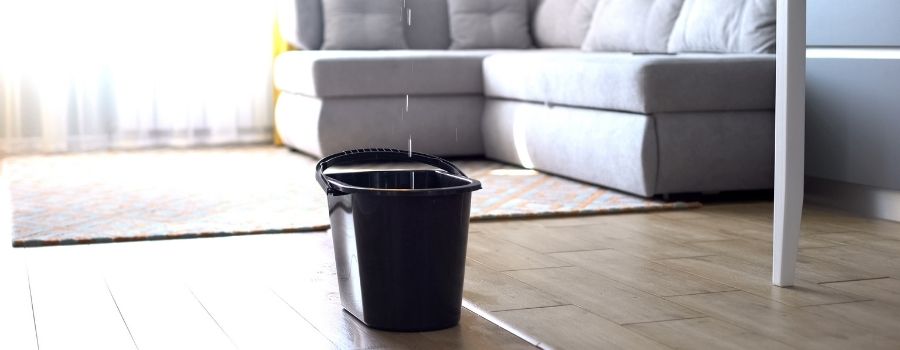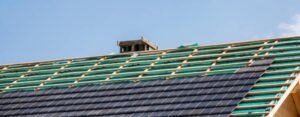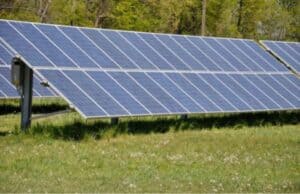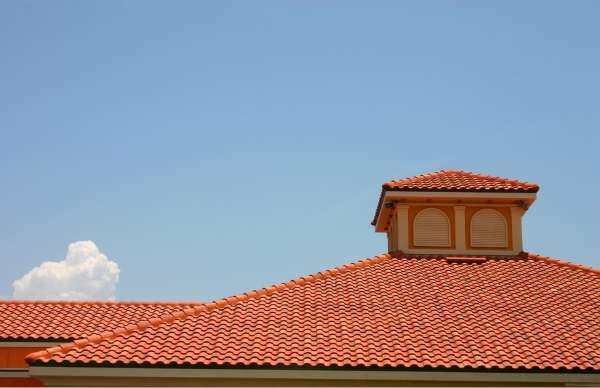
There is a lot of debate surrounding roof leaks after solar panels have been installed. Some people say that solar panels cause roof leaks, while others claim that this is nothing more than a myth. I wanted to do a deep dive into the truth so I did a little digging, do solar panels cause roof leaks?
Solar panels themselves do not inherently cause roofs to leak. If installed correctly by a professional, solar panels should not lead to roof leaks. The key to preventing leaks is proper installation and ensuring the roof is in good condition before installation.
This isn’t to say that pre-existing issues won’t be exacerbated with solar installation. Any home owner looking to install solar needs to do thorough checks with professionals and create a checklist of things to be aware of…that’s where I come in!
Table of Contents
What if There is a Leak
If you suspect that your solar panels have caused a roof leak, it’s important to address the issue promptly and effectively to prevent further damage.
- Identify the Leak: First, confirm that the leak is indeed caused by the solar panel installation. Signs of a leak might include water stains on the ceiling, dripping water during rain, or visible damage to the roof around the solar panels.
- Contact the Installation Company: Reach out to the company that installed your solar panels. Most reputable installers offer warranties and after-installation services. They should inspect the installation and determine if the leak is related to their work.
- Temporary Measures: While waiting for professional help, take temporary measures to mitigate damage. This might include placing buckets to catch dripping water or using waterproof tarps to cover the affected area, if safely accessible.
- Professional Assessment: Have a professional assess both the solar panel system and the roof. It’s crucial to determine whether the leak is due to installation issues, pre-existing roof damage, or a combination of both.
- Repair and Rectification: Depending on the assessment, repairs may be needed either on the roof, the solar panel mounting system, or both. Ensure that a licensed professional carries out these repairs. If the solar panel installation is at fault, the installation company should handle the repairs under warranty.
- Review Installation Documentation: Check your installation agreement and warranty for any clauses related to damage and repairs. This will help in understanding your rights and the responsibilities of the installation company.
- Document Everything: Keep a record of all communications, assessments, and actions taken. This documentation is crucial for warranty claims, insurance purposes, or if legal action becomes necessary.
- Insurance Claim: If applicable, contact your homeowner’s insurance to report the damage. They will guide you through the process of filing a claim, if covered under your policy.
- Follow-Up Inspections: After repairs, schedule follow-up inspections to ensure that the issue has been fully resolved and to prevent future leaks.
- Consider Preventive Measures: Finally, consider preventive measures such as regular maintenance checks to avoid similar issues in the future.
Addressing a roof leak caused by solar panels involves a mix of immediate actions and professional assessments to verify both the roof and solar panel system are functioning correctly and safely.
Ways to Attach Panels Without Putting Holes in Your Roof
Solar panels can be installed without drilling into the roof using several methods, such as Ballasted mounting systems, solar shingles or tiles, thin-film solar panels or ground mounting standard panels.
Ballasted Mounting Systems
One popular method, especially for flat roofs, is using ballasted mounting systems. These systems use weight, typically in the form of concrete blocks or other heavy materials, to securely hold the solar panel frames in place (2).
The primary advantage is that there’s no need to penetrate the roof’s surface, thus eliminating the risk of leaks associated with drilling. This method is most commonly used on commercial buildings with flat roofs but can be adapted for residential use as well.
Standing Seam Metal Roof Clips
For buildings with standing seam metal roofs, solar panels can be attached using special clamps that grip onto the seams.
This method doesn’t require any penetration of the roofing material, as the clamps attach directly to the raised seams of the metal roof. It’s a secure, leak-proof method that also preserves the integrity and warranty of the roof.
Solar Shingles or Tiles

Another innovative approach is the use of solar shingles or solar tiles. These products integrate photovoltaic cells directly into roofing materials.
They are installed like traditional shingles or tiles, essentially becoming part of the roof itself.
While this method involves replacing part or all of the existing roofing material, it eliminates the need for separate solar panels and the associated mounting hardware.
Thin-Film
While less common for residential use, thin-film solar panels offer flexibility in installation. These lightweight panels can be adhered directly to the roofing material, depending on the roof type and the specific product. However, they are generally less efficient than traditional solar panels and may not be suitable for all applications.
Ground-Mounted

If roof concerns are paramount, ground-mounted solar panels are an alternative.
These systems are installed on the ground on your property, using either standard or ballasted mounting systems, completely bypassing the need to attach anything to the roof.
Roof Conditions Prior to Installation
Impact of Pre-Existing Roof Issues
Pre-existing roof issues can significantly impact the suitability and safety of the installation. The presence of leaks, structural weaknesses, or damaged shingles can escalate into more severe problems once the weight and structure of solar panels are added.
One common concern is the presence of undetected leaks. These can be exacerbated by solar panel installations, as the mounting system may inadvertently seal water underneath the panels, leading to hidden rot or mold.
A roof inspection should confirm whether the roof can support the additional weight of the solar panels. This includes evaluating the condition of rafters and trusses.
Older roofs may need reinforcement or, in some cases, a complete replacement to safely hold the panels.
The longevity of the roof materials should be considered. If the roof is nearing the end of its lifespan, it’s advisable to replace it before installing solar panels. This is because removing and reinstalling panels to accommodate roof repairs can be costly and inconvenient.
Challenges with Old or Damaged Roofs
Old or damaged roofs pose specific challenges for solar panel installation. An old roof, especially one close to or beyond its expected lifespan, is likely to have weakened materials that may not securely anchor the solar panels. The risk of tiles or shingles breaking during installation is higher, which can lead to additional repair costs.
In the case of damaged roofs, there’s the risk of compromising the waterproofing integrity of the roof. Solar panel mounts require drilling into the roof, which can be problematic on a damaged surface. The installation process might exacerbate existing issues, leading to leaks or structural damage.
It’s also worth considering the aesthetic aspect. Solar panels will draw attention to the roof, and an old or visibly damaged roof can detract from the overall appearance of the home.
Compatibility and Material Concerns
The compatibility of roof materials with solar panels is a fundamental aspect to consider before installation. Different roofing materials offer varying degrees of suitability for solar panel installation, impacting both the installation process and the long-term performance of the solar energy system.
Asphalt Shingles
The most common roofing material in many regions, asphalt shingles, are highly compatible with solar panels. They are durable, easy to work with, and allow straightforward installation of the mounting hardware.
The flexibility of asphalt shingles accommodates various mounting systems, making them an ideal choice for residential solar installations.
Metal Roofs with Standing Seams
Metal roofs, especially those with standing seams, are another excellent choice for solar panel installations. The seams provide a natural anchor point for the panels, eliminating the need for drilling holes.
This reduces the risk of leaks and structural damage. Additionally, metal roofs have a long lifespan, aligning well with the longevity of solar panels.

Tile Roofs
Tile roofs, including clay, concrete, and slate tiles, present a more complex scenario. While they are durable and have a long lifespan, their brittleness can pose a challenge during installation.
Special mounting systems are required to securely attach solar panels to tile roofs without causing damage. Installers experienced in working with tile roofs can ensure a successful installation.
Wood Shingles and Cedar Roofs
Wood shingles or cedar roofs are less common and generally not recommended for solar installations. The primary concern is their susceptibility to damage during installation and potential fire hazard.
Flat and Rubber Roofs
Flat roofs, often found on commercial buildings, are suitable for solar panels but require a different mounting strategy.
Ballasted mounting systems, which use weight rather than penetrations to hold panels in place, are commonly used.
Rubber (EPDM) roofs are also compatible with solar panels, but care must be taken to ensure the roofing material is not punctured or damaged (1).
Roof Incompatibility with Panels
Incompatibility between roof materials and solar panels can arise due to various factors, including material properties, roof age, and design.
- Age and Condition: An old or significantly worn roof is generally incompatible with solar panel installation. The risk of damage during installation is high, and the roof may not have the structural integrity needed to support the additional weight.
- Unconventional Materials: Some unconventional roofing materials, such as green roofs (covered with vegetation) or certain synthetic materials, may not be suitable for standard solar panel installations. These roofs may require specialized systems or may be completely incompatible.
- Architectural Challenges: Roofs with complex designs, significant shading, or unusual angles may not be suitable for optimal solar panel placement. While custom solutions can be developed, these installations are often more challenging and costly.
- Weight Concerns: Heavy solar panels on a roof that cannot support their weight is a significant compatibility concern. Structural assessments should be conducted, especially for older buildings, to ensure the roof can safely bear the load.
Facts and Myths: Solar Panels and Roof Leaks
In the discussion of solar panels and roof leaks, it’s vital to separate facts from myths. This helps in understanding the true impact of solar panels on roofs and alleviates unnecessary concerns.
Fact 1: Proper Installation is Key: Properly installed solar panels do not cause roof leaks. Professional installation, which includes using quality mounting equipment and ensuring watertight seals, is crucial in preventing leaks.
Myth 1: All Solar Panel Installations Damage Roofs: There’s a common misconception that solar panel installation inherently damages roofs. In reality, with the right techniques and materials, the risk of damage is minimal.
Fact 2: Age and Condition of Roof Matter: The condition of the roof prior to installation plays a significant role. Older roofs or those in poor condition are more susceptible to damage and leaks, regardless of the solar panel installation.
Myth 2: Solar Panels Always Increase Roof Load Significantly: Many believe that solar panels add excessive weight to the roof, leading to structural issues. While they do add weight, most modern roofs are designed to handle this additional load without any problem.
Fact 3: Maintenance is Essential: Regular maintenance of both the roof and solar panels is essential in preventing leaks. This includes clearing debris, checking for damage, and ensuring seals remain intact.
Myth 3: Solar Panels are Impossible to Remove for Roof Repairs: Some homeowners worry that once installed, solar panels cannot be removed for roof repairs. In reality, panels can be safely detached and reinstalled by a professional if roof work is necessary.
Fact 4: Warranties and Insurance Can Provide Protection: Many solar panel installations come with warranties that cover potential roof damage. Additionally, homeowner’s insurance policies may also provide protection against such issues.
Frequently Asked Questions
Do Solar Panels Void Warranties On Your Roof?
Having solar panels installed will not void your roof warranty. Solar and roofing industries have been working together for years, ensuring that solar installation does not void a roof warranty. In fact, most solar companies will offer you an additional warranty on top of the manufacturers.
Do Solar Panels Ruin Your Roof?
In general, solar panels do not ruin or damage your roof. As long as you use a reputable company that knows how to properly install solar panels on your type of roof, then your roof will be just fine.

